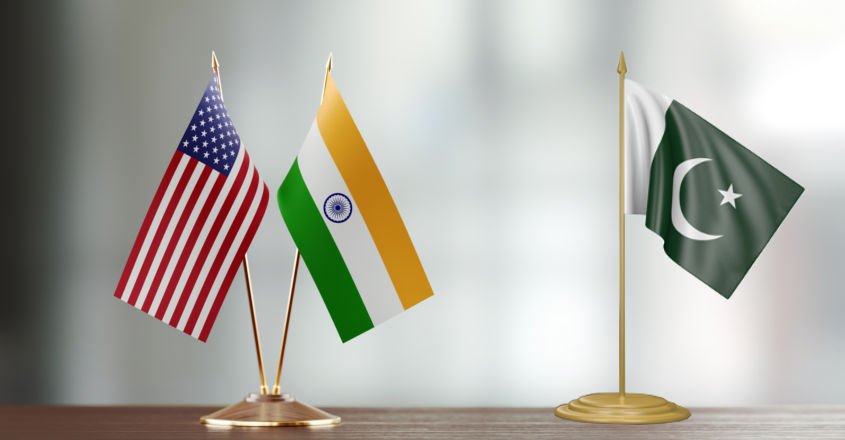Usama Jamshed
In the evolving dynamics of international relations, states rely on self-help as a means of ensuring their survival, which is a core principle of realism. States identify threats and take measures to counter them. From the beginning, Pakistan’s security dilemma has centered on India.
An eminent research scholar Dr. Rasul Baksh Rais articulated, “For over a half-century, Pakistan’s security dilemma has been about how to balance, counter, and if necessary, fight the Indian threat. In an attempt to resolve this conundrum, Pakistan Security officials employed two traditional strategies: forming alliances with major world powers to augment defense capability and, from the 1970s onward, nuclear deterrence to offset India’s conventional superiority”.
In line with this strategy, Pakistan was one of the front-line allies of the United States, especially during the Soviet-Afghan war (1979-1989) and the War on Terror after September 11, 2001. However, as the saying goes, there are no permanent enemies or permanent friends in international relations. China’s ascent to prominence as an adversary to the United States has led the US to contemplate new regional and global alliances.
In the region, no state has military, economic, and general capabilities more suitable than India to serve as a potential counterweight to China. As a result, India has become a valuable ally of the United States. The US aims to back India as a regional hegemon or a policeman to represent American interests. The US is prepared to support India politically, tactically, and economically.
This notion is demonstrated by the current upward trajectory of Indo-US collaboration. In 1998, India was subject to U.S. sanctions; today, Washington is the largest trading partner of New Delhi. Bilateral trade surged from $80.51 billion in 2020-21 to $119.5 billion in 2022-23. This strategic partnership, motivated by mutual interest, aims to lessen reliance on China. Both states have strong ties and security shares in different aspects such as Quadrilateral Security Dialogue (QUAD) and I2U2 (India, Israel, United States, and UAE).
The QUAD is a strategic pivot between Australia, India, Japan, and the United States. It also includes joint military drills such as Exercise Malabar. The I2U2 serves as a forum for joint investment and other initiatives. Additionally, major bilateral investments, including a substantial Boeing deal, defense agreements, and critical chip partnerships, underscore the deepening relationship.
The balance of power in South Asia is being seriously disrupted by the growing cooperation between the US and India. The security landscape of South Asia is defined by the longstanding competition between two major powers, India and Pakistan. The comprehensive security framework of the area hinges on the interdependent connection between these two states.
The growing prominence of a single state as a dominant power disrupts the equilibrium of power within the region. The United States and India’s cooperation in the age of cutting-edge defense technology has raised concerns for Pakistan. Academicians and defense experts have their views that India will be included in the F-35 project in the coming years to further accelerate the strategic shift. Such advancements could push Pakistan to pursue modern weapon technologies, which might eventually trigger an arms race in South Asia.
Furthermore, Pakistan fears that the strategic partnership between the United States and India will have a detrimental effect on ongoing regional issues, especially the conflict over Kashmir. Pakistan fears that empowering India, a nation with a history of disregarding international norms, could embolden it to pursue a more aggressive foreign policy. This worry stems from India’s unilateral decision on August 5, 2019, to abrogate the special status of Kashmir, which Pakistan views as a breach of a UN resolution. Pakistan fears that this arms support for India could lead to increased tensions in the region.
Due to this growing cooperation, Pakistan, which is already struggling economically, would have to put more emphasis on security, which will put its economy at risk. This will result in difficult-to-manage economic strain. Additionally, this collaboration may affect how the world views Pakistan because India persistently works to discredit Pakistan abroad by portraying it as a state that sponsors terrorism. This negative perception will gain more traction and legitimacy as a result of America’s backing for India, further isolating Pakistan from the rest of the world.
Given the evolving geopolitical landscape, there are limited options for Pakistan. As long as India continues to move closer to the United States, Pakistan must seek counter-alliance to ensure its security, economy, and political interests. At this critical juncture, Pakistan needs to craft a nuanced foreign policy to maintain balance. Pakistan will likely strengthen its cooperation with China and Russia to counter the impact of the India-U.S partnership. However, considering that the US remains Pakistan’s largest exporting market. Pakistan needs to adopt an open-ended approach to maintain healthy relations with all major powers. Internally, Pakistan must focus on reviving its economy and fostering greater national cohesion to mitigate the effects of this strategic alignment.
*The writer is affiliated with the Institute of Strategic Studies, Islamabad. He can be reached at osamajams123@gmail.com.
**The opinions in this article are the author’s own and may not represent the views of The Diplomatic Insight. The organization does not endorse or assume responsibility for the content.
The Diplomatic Insight is a digital and print magazine focusing on diplomacy, defense, and development publishing since 2009.



